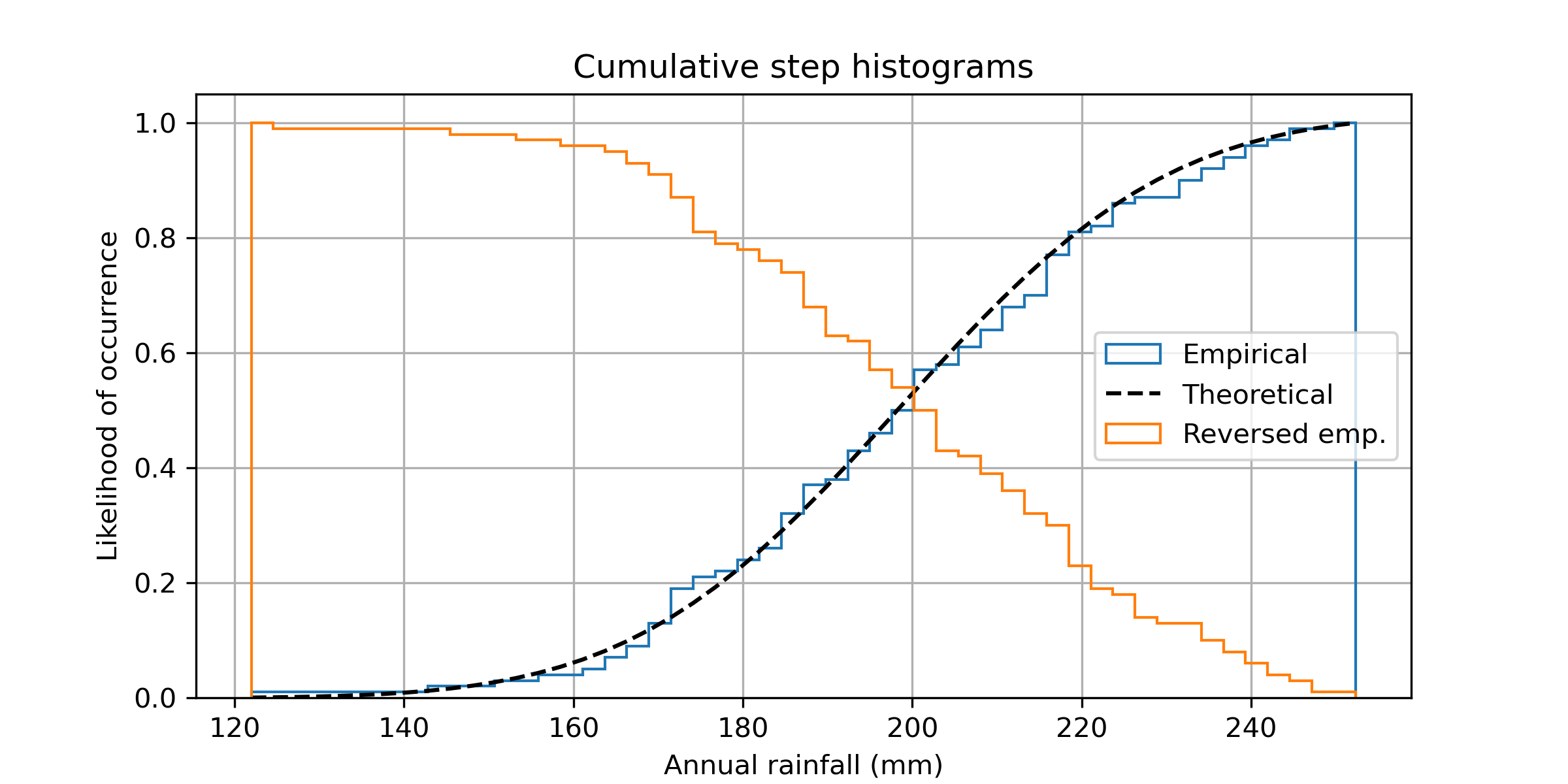>>> """
==================================================
Using histograms to plot a cumulative distribution
==================================================
This shows how to plot a cumulative, normalized histogram as a
step function in order to visualize the empirical cumulative
distribution function (CDF) of a sample. We also show the theoretical CDF.
A couple of other options to the ``hist`` function are demonstrated. Namely, we
use the *normed* parameter to normalize the histogram and a couple of different
options to the *cumulative* parameter. The *normed* parameter takes a boolean
value. When ``True``, the bin heights are scaled such that the total area of
the histogram is 1. The *cumulative* keyword argument is a little more nuanced.
Like *normed*, you can pass it True or False, but you can also pass it -1 to
reverse the distribution.
Since we're showing a normalized and cumulative histogram, these curves
are effectively the cumulative distribution functions (CDFs) of the
samples. In engineering, empirical CDFs are sometimes called
"non-exceedance" curves. In other words, you can look at the
y-value for a given-x-value to get the probability of and observation
from the sample not exceeding that x-value. For example, the value of
225 on the x-axis corresponds to about 0.85 on the y-axis, so there's an
85% chance that an observation in the sample does not exceed 225.
Conversely, setting, ``cumulative`` to -1 as is done in the
last series for this example, creates a "exceedance" curve.
Selecting different bin counts and sizes can significantly affect the
shape of a histogram. The Astropy docs have a great section on how to
select these parameters:
http://docs.astropy.org/en/stable/visualization/histogram.html
"""
...
... import numpy as np
... import matplotlib.pyplot as plt
...
... np.random.seed(19680801)
...
... mu = 200
... sigma = 25
... n_bins = 50
... x = np.random.normal(mu, sigma, size=100)
...
... fig, ax = plt.subplots(figsize=(8, 4))
...
... # plot the cumulative histogram
... n, bins, patches = ax.hist(x, n_bins, density=True, histtype='step',
... cumulative=True, label='Empirical')
...
... # Add a line showing the expected distribution.
... y = ((1 / (np.sqrt(2 * np.pi) * sigma)) *
... np.exp(-0.5 * (1 / sigma * (bins - mu))**2))
... y = y.cumsum()
... y /= y[-1]
...
... ax.plot(bins, y, 'k--', linewidth=1.5, label='Theoretical')
...
... # Overlay a reversed cumulative histogram.
... ax.hist(x, bins=bins, density=True, histtype='step', cumulative=-1,
... label='Reversed emp.')
...
... # tidy up the figure
... ax.grid(True)
... ax.legend(loc='right')
... ax.set_title('Cumulative step histograms')
... ax.set_xlabel('Annual rainfall (mm)')
... ax.set_ylabel('Likelihood of occurrence')
...
... plt.show()
...
... #############################################################################
... #
... # .. admonition:: References
... #
... # The use of the following functions, methods, classes and modules is shown
... # in this example:
... #
... # - `matplotlib.axes.Axes.hist` / `matplotlib.pyplot.hist`
...

